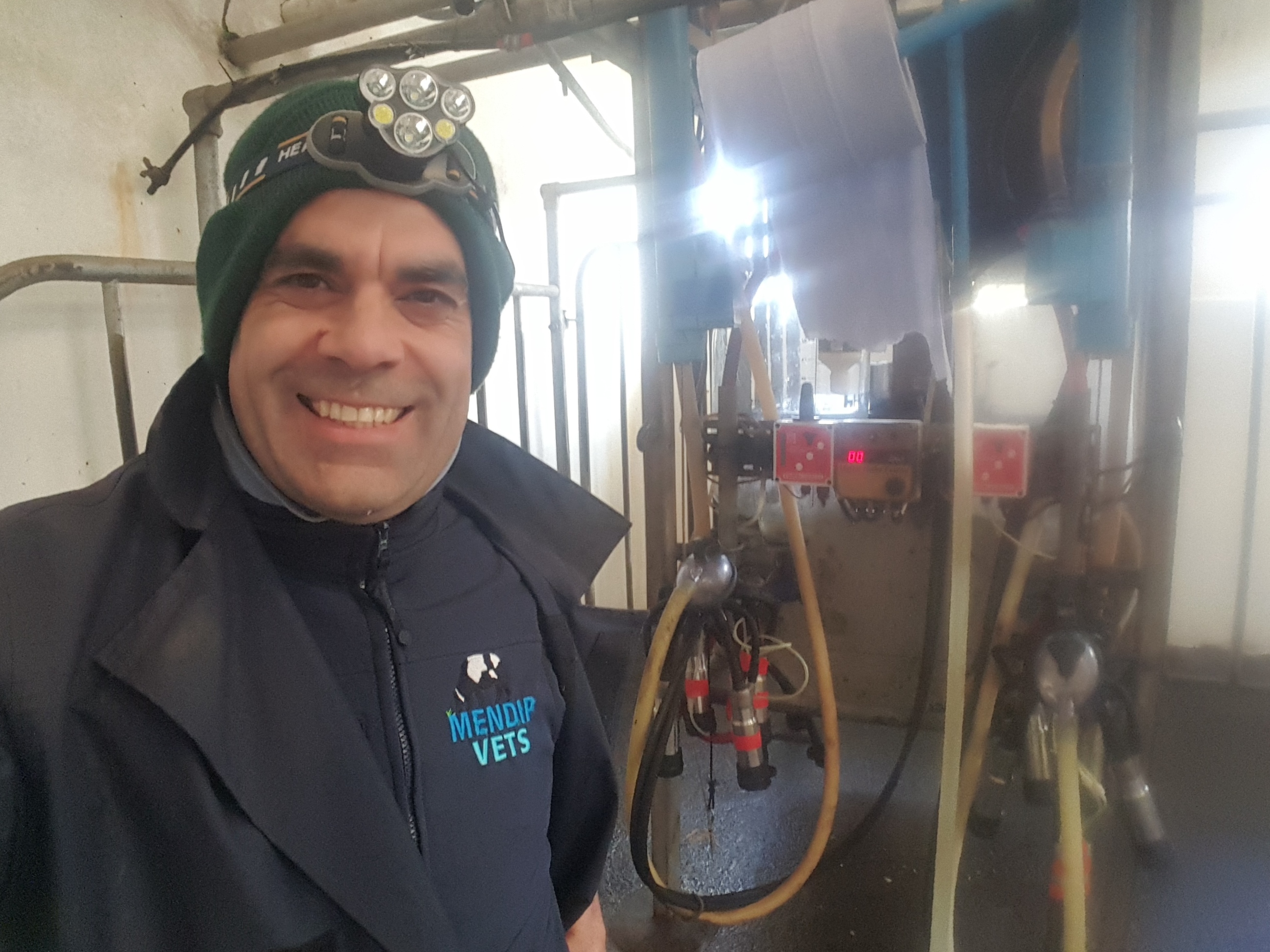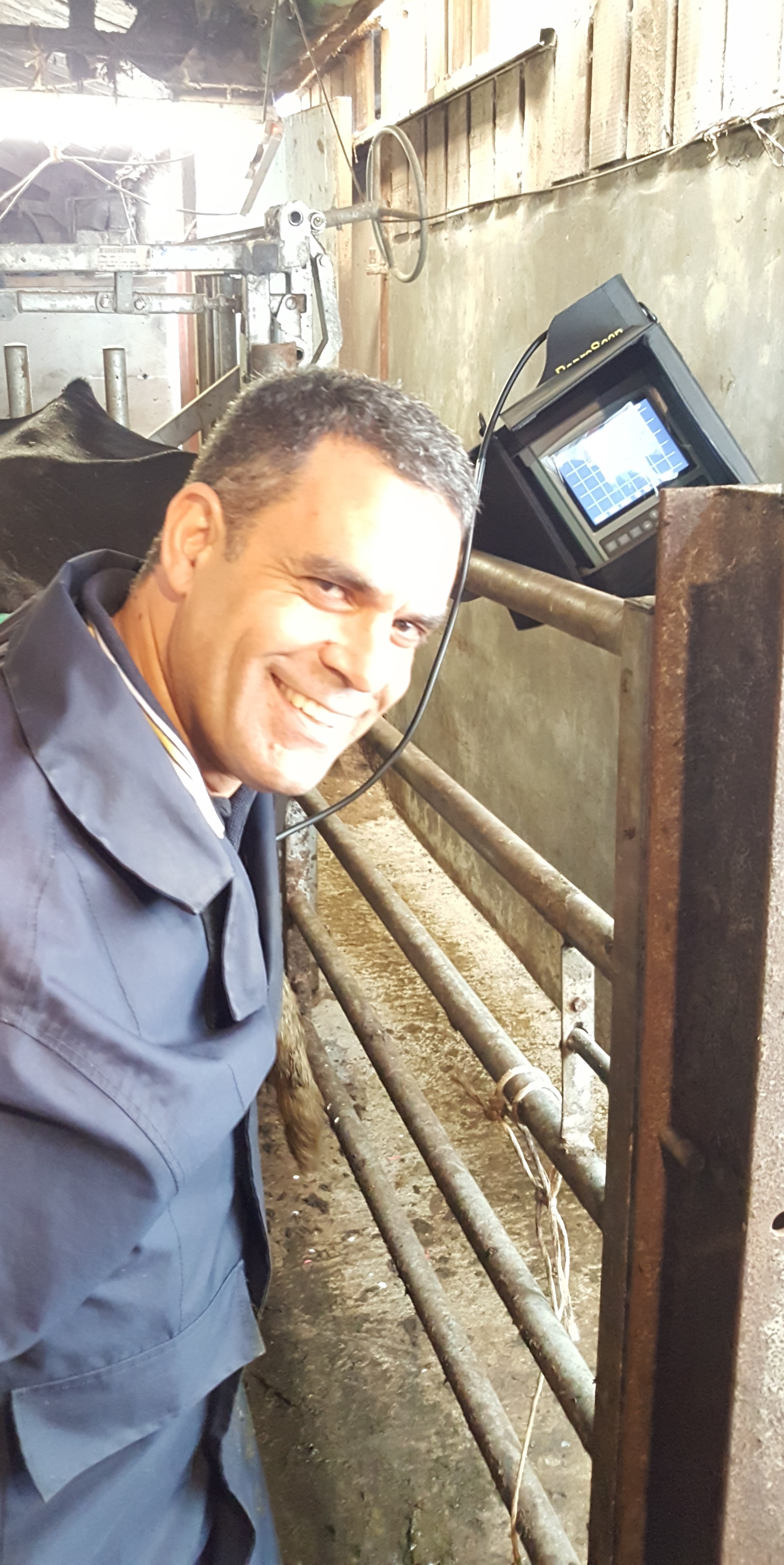



Dynamic testing at Usk Prison Farm
High cell counts, over reliance on antibiotics and unsettled cows can be an issue in any milking parlour. When that parlour is 30 years old and unlikely to be replaced in the near future, finding a working solution is urgent.The prison farm at HM Prison Prescoed, Usk, will shortly be the only dairy farm left in the prison service. Prisoners work on the farm in the final stages of their sentence and benefit hugely from working with animals. The skills taught at the farm help with rehabilitation and, in some cases, has led to a career change on release.
The milk produced by the 120 cows is sold on a liquid milk contract to Tesco. It means everything is documented, scored and monitored. Analysis showed there were too many mastitis cases, cell counts were high, as was antibiotic usage, and milk was being dumped.
It meant that Farm Manager, Richard Gough, had to look at all aspects of the problem. He knew a £150,000 new parlour was not an option. The prison farm has to be cost neutral and, ideally, make money for the prison service.
Nutrition and Management consultant, John Powrie, had recommended the independent advice and, critically, a Dynamic test. It was important to ensure the parlour was fit for purpose and to appraise the milking routine, environment, housing and cow management. Mendip Vets were consulted and a Dynamic Test on the milking parlour commissioned. The fact that cows were regularly kicking off the clusters was beginning to present a safety issue.
Richard Gough said: “Dr Sotirios Karvountzis of Mendip Vets came for the afternoon milking last October and he found certain things that needed actioning straight away. He looked at the routine and how we go about doing things and found it was generally good.
“One issue was teat coverage of the post milking spray. One of the downsides of the training and rehabilitation aspect is that we often have too many people in the parlour. The guy was doing it as quickly as possible, thinking that is what he was required to do. He was spraying the two teats in front of him well, but not covering the two at the back very well.”

The milking parlour had been serviced, repaired and adapted over the years. A range of different manufacturers’ equipment was fitted as things had worn out or needed replacing. It transpired that the parlour had been set at single phase pulsation, instead of double phase, as was the manufacturer’s specification. The result of this was poor milk flow away from the teat end and liner slip. Both conditions can result in increased mastitis and high cell counts.
Looking closely at the liners being used, Dr Karvountzis found that the cows at the farm had generally thin and long teats, similar to a Jersey cow, and that the liners being used were not a good fit. Poor liner fit leads to liner slip and excess demand on the vacuum reserve and risks mastitis, high cell counts and results in teat end damage. This teat end damage was in evidence.
The ACRs or automatic cluster removers were not working properly. The ACR should shut off the vacuum and remove the unit from the udder once the flow of milk has dropped below a certain
volume (ie 0.2 lt per min). Applying vacuum to a teat beyond the point the quarter has ceased milking is called overmilking.
Every single trace showed overmilking. One cow was overmilked for 2.3 minutes out of a total milking time of 5.15 minutes. The ACR’s were not closing off the vacuum completely before "snatching" the unit off. This led to cows kicking at the units as they were uncomfortable as the clusters were pulled off.

Richard Gough added: “We changed straight away from a spray to a teat cup, so giving less opportunity for human error.
“We used a lanolin based dip to improve the teat condition. We reset the pulsation to dual phase, changed the liner type and we put new clips in to shut off the vacuum on the ACRs more effectively.”
The result was much happier cows, milking times were reduced and cell counts are now in the low 100s. Crucially, management of cell cows is now totally different, with no milk dumped and more milk produced and sold.
The problem had peaked last July, when 12 cows were treated with 20 tubes of antibiotic. Then, in October, with the start of the new protocols, three cows were treated with four tubes. In November and December, it was down to one cow and two tubes in each month.
Mr Gough said: “Then in January, February and now March we haven’t had any cows with mastitis and have not used any antibiotic tubes. It all started after talking to Sotirios. We have changed our management of cell count cows as well.
“We don’t use antibiotics as a rule now. We’ve been amazed that not treating cows has become our first port of call, whereas previously we would treat cows and dump the milk.”
Dr Sotirios Karvountzis says the results were "immensely rewarding" when he returned in January. The key element had been that the findings of the Dynamic Test provided clear evidence of failings in the plant.
He added: “I was the catalyst, but we all got together, the farm manager, the consultant and the cowman and focused on the areas that mattered.
“The very good people with me were anxious to ensure the problem was identified. I had gone in with an open mind, but during the Dynamic Test it became evident that there were issues with the milking plant.
“I had 20 minutes to interpret the results of the three hour visit and then to present it in a way that they could understand and carry out as a team. The key point is to customise the advice to what each farming environment needs.”
Dr Karvountzis stressed that the age of the plant wasn’t relevant. Some issues were immediately fixed, the others were completed within four weeks. This allowed the team to move onto the next step, setting up improved protocols for mastitis management.


